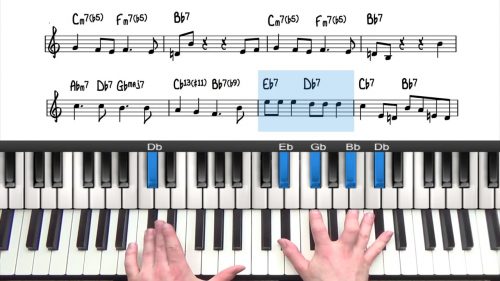Altered Arpeggio Patterns
In this lesson we explore arpeggios for dominant chords. We start with an unaltered dominant arpeggio pattern that uses the arpeggio based on the 3-5-7-9 as we have covered in the previous lessons for major and minor chords.
Dominant Chord Alterations
Using the dominant 7 arpeggio shape, we then introduce the chord alterations including the b9, #9 and #5. These chord alterations add colour, tension, and interesting flavours to our improvised melodies.
We start with single alterations, then double alterations, then we will discover a versatile altered arpeggio run to use on dominant chords.
Lesson Downloads
-
Altered Arpeggio Patterns File Type: pdf
Practice Tips
-
Start by targeting the 3rd of each dominant chord and adding an unaltered 9th arpeggio. Play through the entire A section with this pattern.
-
Next introduce the b9 instead of the natural 9. Walk up the arpeggio as with the previous exercise.
-
Rearrange the order of the notes so that your arpeggio lines do not always follow a step-wise pattern.
-
Always keep the point of resolution in mind.
-
Introduce the #9 in combination with the b9 and use this as the starting point for the descending altered arpeggio pattern.








This series of individual improv lessons for Misty is your finest work. The transcriptions of these lessons is most beneficial for visualization and practicing these lines. I hope that you will do additional improvisation lessons in the future. Thanks
Thank you for these useful altered patterns. For me it is easier to conceive the alterations as minor chords (add9) a half step above the root of the dominant – as the altered scale is a mode of the corresponding melodic minor scale.
Thank you for the tip, really useful! :)